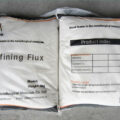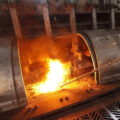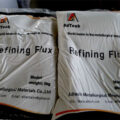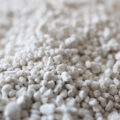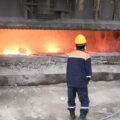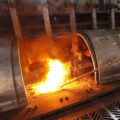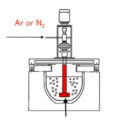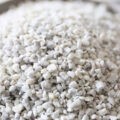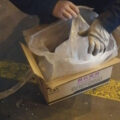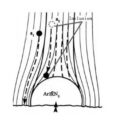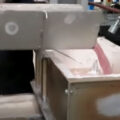Aluminum is a very active metal, which easily reacts with water vapor during the smelting process to generate hydrogen and oxide inclusions (Al2O3). These non-metallic inclusions are very harmful to the performance of aluminum products. Therefore, the purification of aluminum melt is one of the main ways to improve the quality of aluminum products. The flux method to remove inclusions and gases is a commonly used method for purifying aluminum melt, which has the advantages of simple process and low cost. Therefore, it is necessary to research and develop new degassing and impurity removal technologies.

The content of inclusions in industrial pure aluminum is generally above 0.1%, and most of the inclusions are larger than 10 microns in size. The international level of inclusion removal, the inclusion content in the aluminum melt is 0.02%, and the size of the inclusions is less than 7 microns. At present, the commonly used fluxes are fluorine salt and chlorine salt, etc. These salts are dried and ball milled and mixed, and then put into the aluminum melt. The molten salt is in contact with the aluminum melt to remove a part of the inclusions, but this method cannot fully contact the flux and the aluminum melt. In addition, the mixed molten salt is pressed into a block and placed in the bottom of the aluminum melt. When the molten salt melts, it floats from the bottom to the top layer, and the molten flux passes through the aluminum melt, which can remove a part of the inclusions. In addition, these salts are put into the aluminum melt, but some of the salts are not sufficiently mixed, these salts will not melt under the melting temperature of the aluminum melt, thereby forming new inclusions.
The aluminum ingot is placed on the mixed molten salt. When the aluminum droplets pass through the molten flux layer when the aluminum ingot is melted, the inclusions on the surface of the aluminum melt in contact with the flux are easily removed. The disadvantage of this method is that since the inclusions in the aluminum melt cannot carry out long-range mass transfer, the part of the inclusions wrapped in the aluminum melt that is not in contact with the flux is not easy to remove. This kind of flux purifying aluminum melt technology has some shortcomings. The impurity removal efficiency is not high. There are dead corners during purification, that is, the flux cannot fully contact the aluminum melt. The aluminum droplets pass through the flux layer with a larger diameter and are wrapped in the middle of the aluminum droplets. The inclusions cannot come into contact with the molten flux, and therefore, the flux removal effect cannot be fully exerted.

